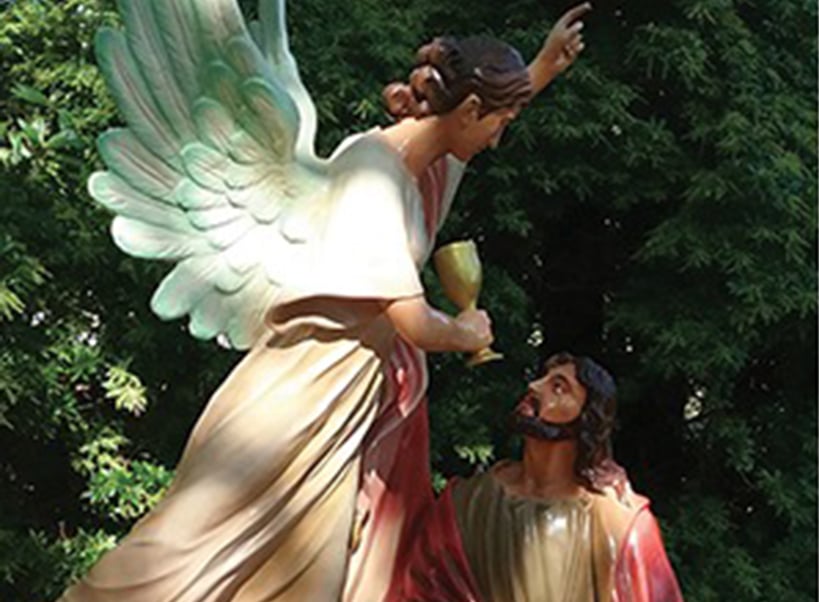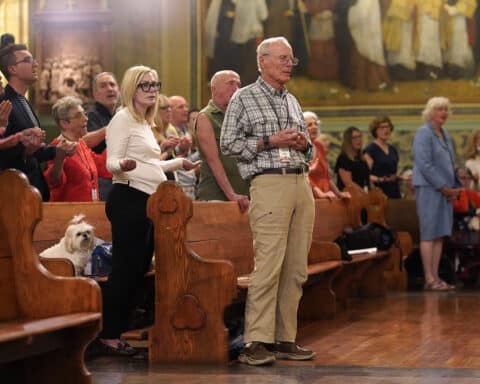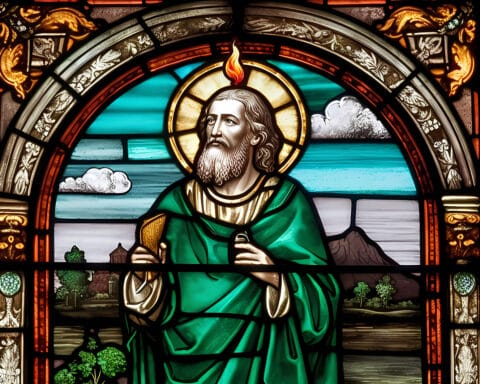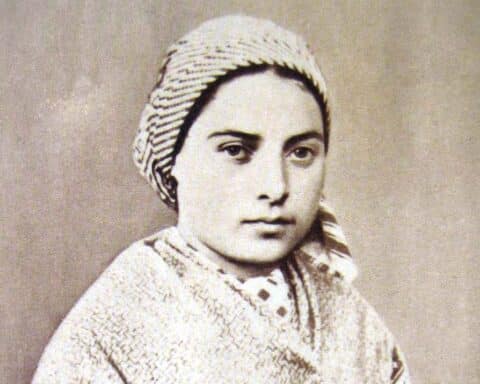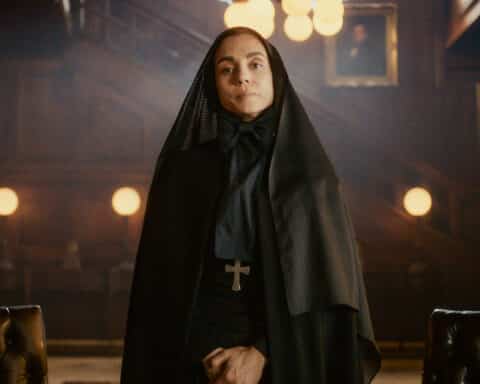Quality church art can make the supernatural more real to worshippers, guiding prayer and making houses of worship more appealing to visitors. Gregory Cave of Cave Co. realizes this as well as anyone, as he has devoted 42 years of his professional career to providing religious items to churches, schools, retreat centers and related facilities. In recent years, he has modified his focus to the design and creation of life-size marble and bronze statues, developing a system to create them affordably and quickly without sacrificing quality.
At 5:30 a.m. on St. Patrick’s Day 2018, for example, Cave arranged the delivery of a white marble statue of St. Patrick to Assumption Parish in Ansonia, Connecticut. Assumption is a beautiful Catholic parish built by Irish immigrants in 1891. Cave had the statue built to match the 125-year-old marble bases found at the church.
Assumption’s pastor, Father James Sullivan, said, “We placed it at a perfect location at the entrance to the church. Our whole parish has been pleased with the result; in fact, the 24 candles surrounding the statues have all been kept lit since the statue’s installation.”
Family business
Cave, who describes himself as an “ecclesiologist,” got his start in church supplies from his father, William O’Leary Cave, Sr., a Catholic convert who founded the William O’Cave Company as a family business in his home in New York.
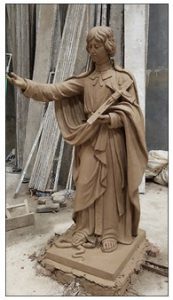
Cave said, “My father was very successful. He was the largest supplier of First Communion items and religious articles to Catholic schools in the Northeast from the 1940s to the 1960s.”
Cave’s mother, Eileen, was his father’s business partner; Cave also had two brothers who participated in the business. Cave himself got his start with the company in 1976, restoring and replating gold chalices, ciboria, candlesticks and other metal items used on the altar for worship. He eventually struck out on his own, founding Cave Co. In 1985, he added “Tree of Life” donor recognition trees and plaques to sales items; organizations can purchase the decorative trees and “sell” individual leaves to donors on which their names are engraved. He admits he borrowed the idea from Jewish synagogues in the heavily Jewish area of New York where he lived, who used them as fundraisers for their communities. He turned around and sold the idea to many Catholic parishes in the Archdiocese of New York that also used them as a fundraising tool.
It was around this time that he began dabbling in religious statues, manufacturing outdoor fiberglass statues for churches and cemeteries. He also did some work in bronze, but, he recalled, “It was expensive, as we imported them from Italy.”
An affordable ministry
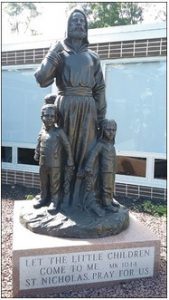
It was in early 2015, he said, that he moved on to “the most exciting time of my career.” Although he’s secretive about his process, he established a business arrangement with artisans and a foundry to make statues more affordably and quickly.
Customers select a desired image, perhaps based on a sketch or image found on the internet, which is used to develop a clay model. A plaster mold is then made from the model. If a bronze statue is being made, molten bronze is poured into the mold and, once cooled and configured, finishes can be applied. Cave refers to it as the “lost wax-casting method.”
The new process, he noted, can bring down the cost of a statue to a quarter of the price of those he made in decades past. Statues typically cost from $7,000 to $19,000, with bronze being the more expensive of the two. Statues are life-size, around six feet in height.
The projects
Cave has worked on a total of 20 statuary projects using his new process.
Father Louis Canino, OFM, director of St. Francis Prayer Center in Stoneville, North Carolina, hired Cave to make a St. Francis of Assisi image to be the centerpiece of the entry to the Center. It features Francis reaching out to a sick man. He hired Cave after learning about his company from a magazine advertisement and was pleased to find Cave “great to work with. He followed through, let us tweak the design, gave us progress reports on the clay model and even made suggestions along the way.”
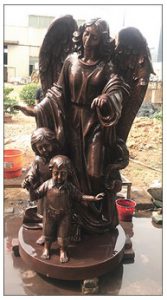
The clay model of the 7-foot statue bronze has been approved, and the plaster cast is being made. Although a delivery date has not yet been set, Father expects the finished statue by the end of the year. Cave has pledged to go to its dedication ceremony.
Father Canino said, “I think it is going to be a marvelous piece. I told Gregory that I want our piece featured in his next magazine ad!”
Father received quotes from two other statuary companies, but noted that the bids were “out of sight.” He continued, “Not only could we not afford them, but even if a donor had stepped up, we wouldn’t have done it. It’s not right to have expensive statues when there are people going without food, clothing or shelter.”
Father Aidan Peter Rossiter, CJ, pastor of St. Louis de Montfort Church in Santa Maria, California, hired Cave to make a 5-foot marble statue of the church’s namesake. He enjoyed the back-and-forth process with Cave of creating the statue and was pleased with the end result. He said, “It’s very lovely. I especially like its beautiful face.”
Like what you’re reading? Subscribe now in print or digital.
Other notable projects include a statue of Blessed Solanus Casey for St. Felix Catholic Center in Huntington, Indiana; a guardian angel statue for St. Charles Borromeo Parish in Tacoma, Washington; and one of St. Nicholas for Our Lady of the Sacred Heart Church in Tappan, New York.
Cave, 62, is married and lives in Long Island, New York. A Catholic himself, he’s pleased that his professional career has played a role in spreading the Gospel. He noted, “They say a picture is worth a thousand words. But a good religious statue is worth 10,000 words!”
Jim Graves writes from California.

